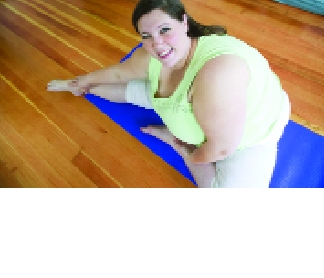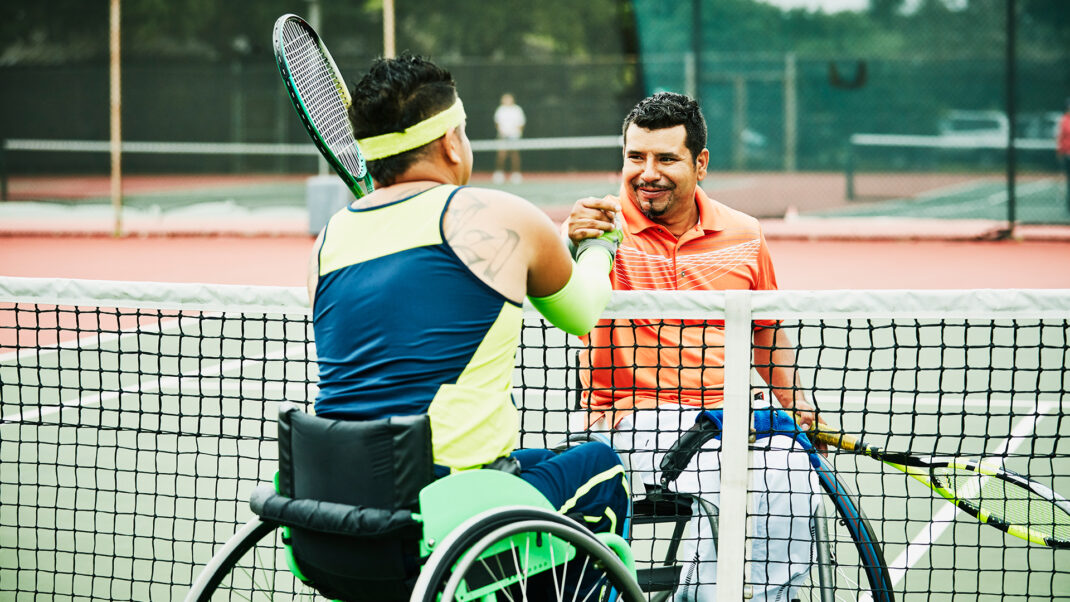Marketing to the Plus-Size Client
How to communicate the message that you and your business are "size friendly".

For the overweight individual, finding a movement program that is appropriate for his or her body can be a challenging and intimidating experience. By creating size-friendly marketing materials, creating relationships with professionals in your community and building client loyalty, you can promote your business in
a way that conveys that you are size-friendly. Doing so will encourage plus-size participants to engage your services.
Generate Size-Friendly Advertising
In all of your advertising materials, use size-friendly vocabulary to describe your programs. Do not “sugarcoat” the fact that your programs are for overweight people. The challenge is to find the vocabulary that best suits your community. In different parts of the world, the overweight community uses different terms to describe itself. In urban areas, the word plus may be clear enough, but in suburban areas terms like large or women of substance may be better. Other terms may include large bodies, round yoga, big bodies, movement for the rest of us, fat and plus-size. What language should you use? Survey a few clients or other people who might be interested in your program. Ask them what words would speak to them directly to help them identify your program as one designed specifically for overweight individuals. While the answers may vary, there should be some commonality that will help you craft your marketing materials.
Also, make sure to use size-sensitive language. For example:
- healing versus combating obesity
- movement instead of exercise
- as your body changes shape versus as you lose weight
- disconnected from the self instead of lazy
It’s also important to say what you do. Don’t promote your classes as the answer for weight loss. As a health professional, you truly cannot guarantee weight loss.
Reach Out to the Community
Once you have size-friendly materials, how can you use them to promote your classes? Consider these ideas:
Write Articles. Try writing for your local community paper or place-of-worship bulletin. Examples of topics for the community paper might include safe walking routes, how to climb stairs or the benefit of understanding that all movement counts! For the place-of-worship bulletin, you can write about the activity of kneeling or getting down to the floor and up again. Describe what muscles are being used, how to do the movements properly for maximum benefit, how to work the abdominals and how singing helps with breath and stress reduction.
Tap Into Appropriate Groups. If any of your clients belong to a support group—such as a “diet,” bypass surgery or women’s health group—they may agree to take your marketing materials to the group.
Put Fliers in Supermarkets. Which
supermarkets? A health food store may not be the right place to go, since many who shop there have already “bought into” the healthy lifestyle. Before you drop off fliers at a given store, spend an hour observing who is entering and leaving. A local supermarket may be more in line with your target population. Ask store managers if they would be willing to place your materials in shopping bags or carts. In your fliers, congratulate people on taking an estimated number of steps around the supermarket—that’s movement! Knowing this, they may want to engage your services to become more active in their daily lives.
Connect With Size-Friendly Professionals.
One great way to get referrals is to establish relationships with health professionals. A client may come to you with a history of health issues and/or traumatic experiences. These experiences may inhibit weight loss or the ability to maintain change. In a case like this, partnering with size-friendly health professionals would be in your colleagues’ best interests as well as your own. Health professionals in your network might include an internist, a gynecologist (many women have avoided the recommended annual female tests owing to insensitivity from health professionals), a nutritionist, a therapist and possibly a massage therapist.
How can you create a win-win relationship with one of these professionals?
- Talk to the health professional about your level of expertise, why you are interested in working with the overweight population and what sets your program apart from others.
- Check that the office has chairs with no arms, to accommodate larger bodies.
- Confirm that the health professional is working with “the whole body” and not just the head. For example, a nutritionist could be asking the client about how the food “feels” in the body instead of just caloric intake. A therapist or a doctor could be checking stress levels by monitoring breathing during scheduled appointments and helping the client stay connected to the breath.
Once you have established relationships with health professionals, see if you can leave business cards and brochures at their offices. If you do get a referral, consider sending a handwritten thank-you note to the source once the client has signed on for your services. Sending a handwritten note to the client as well will build loyalty.
Build Client Loyalty
When a new person takes classes or training sessions with you, he may not be completely sold on the idea of exercise. You want to start creating trust so he keeps coming back and potentially refers other clients to you.
Wear Appropriate Attire. One way of building trust is wearing attire that is loose-fitting and moderate in coverage. This makes you much more authentic and approachable and sends a powerful marketing message to the client.
Handle Reverse Discrimination. Be aware of potential reverse discrimination from a client and know how to deal with it appropriately. The “How would you know about being big?” mentality can be alleviated by immediately talking about the client’s body and moving it through space. You don’t have to go into “your story” unless you feel it is a cornerstone of your work. Shift the conversation to the client’s needs and ask, “How can I help you?”
Share Knowledge. Chances are the overweight client has been on every diet out there and joined numerous gyms or fitness programs, only to drop out after a short period of time. Make a difference in her life by being knowledgeable. Listen to her needs and ask why she did not stick with her previous gym or trainer. Help create the bridge from an inactive to an active lifestyle. Focus on activities of daily living and quality-of-life issues. Help the client overcome as many roadblocks as possible. Let her begin her workout in whatever clothes are most comfortable. Know where she can purchase sneakers when she is ready for that level of commitment. Know where she can purchase suitable workout clothes and/or pedometers. Share tips on how to overcome potential physical concerns like chafing thighs and large breasts. Chafing thighs can be covered with bike shorts or soothed with runner’s creams or over-the-counter creams for diaper rash. Large breasts can be held in place with an appropriate sports bra (check out www.junonia.com) or possibly with two bras. It is this knowledge that clearly states you are a size-sensitive health professional concerned with the overall well-being of your client.
Rochelle Rice, MA
A nationally-recognized speaker, educator and author of Real Fitness for Real Women. She holds a masterÔÇÖs degree from NYU specializing in plus-size exercise. Rochelle has appeared on the CBS Early Show and ABC World News Tonight.





